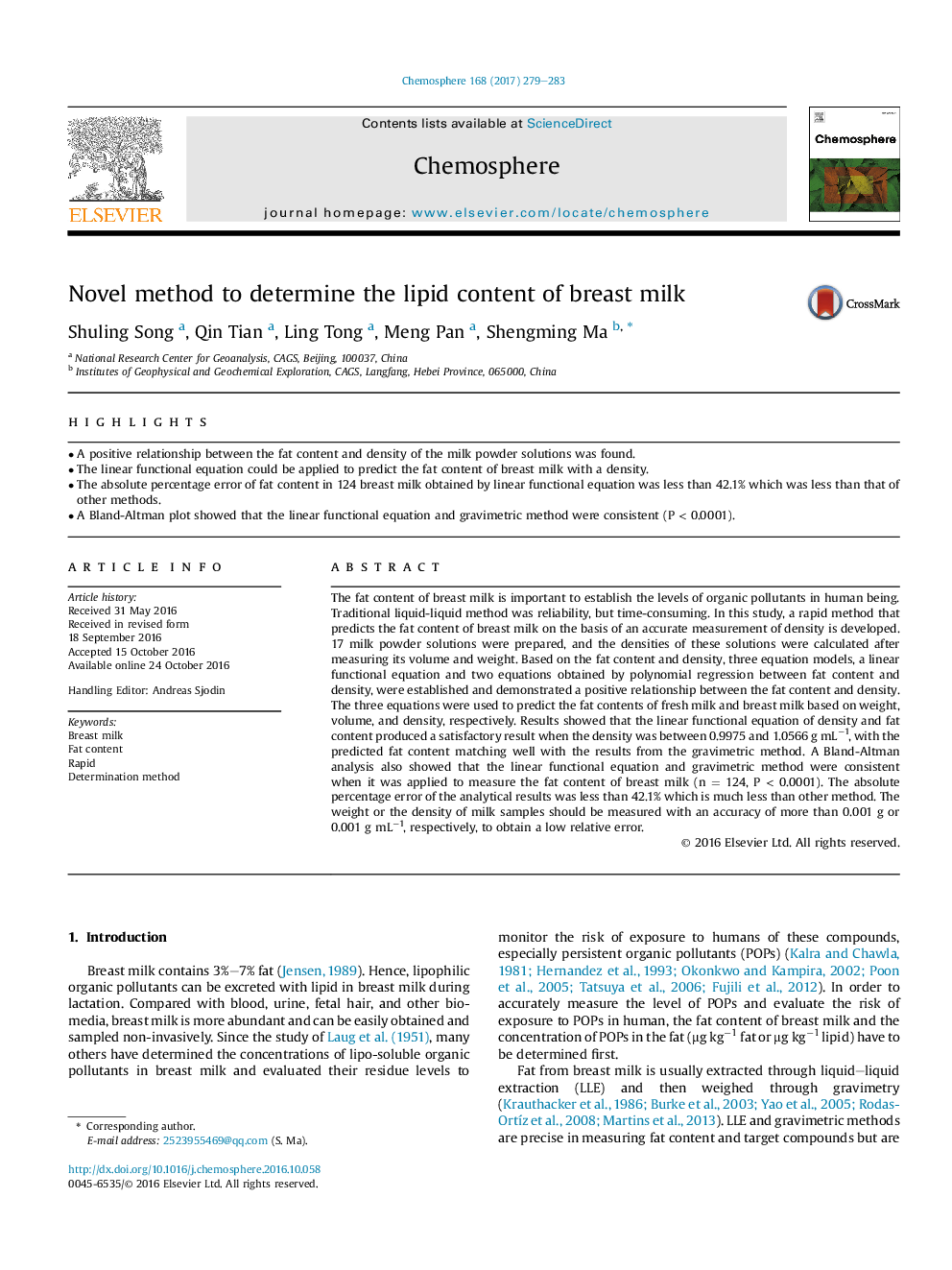| Article ID | Journal | Published Year | Pages | File Type |
|---|---|---|---|---|
| 5746593 | Chemosphere | 2017 | 5 Pages |
â¢A positive relationship between the fat content and density of the milk powder solutions was found.â¢The linear functional equation could be applied to predict the fat content of breast milk with a density.â¢The absolute percentage error of fat content in 124 breast milk obtained by linear functional equation was less than 42.1% which was less than that of other methods.â¢A Bland-Altman plot showed that the linear functional equation and gravimetric method were consistent (P < 0.0001).
The fat content of breast milk is important to establish the levels of organic pollutants in human being. Traditional liquid-liquid method was reliability, but time-consuming. In this study, a rapid method that predicts the fat content of breast milk on the basis of an accurate measurement of density is developed. 17 milk powder solutions were prepared, and the densities of these solutions were calculated after measuring its volume and weight. Based on the fat content and density, three equation models, a linear functional equation and two equations obtained by polynomial regression between fat content and density, were established and demonstrated a positive relationship between the fat content and density. The three equations were used to predict the fat contents of fresh milk and breast milk based on weight, volume, and density, respectively. Results showed that the linear functional equation of density and fat content produced a satisfactory result when the density was between 0.9975 and 1.0566 g mLâ1, with the predicted fat content matching well with the results from the gravimetric method. A Bland-Altman analysis also showed that the linear functional equation and gravimetric method were consistent when it was applied to measure the fat content of breast milk (n = 124, P < 0.0001). The absolute percentage error of the analytical results was less than 42.1% which is much less than other method. The weight or the density of milk samples should be measured with an accuracy of more than 0.001 g or 0.001 g mLâ1, respectively, to obtain a low relative error.
